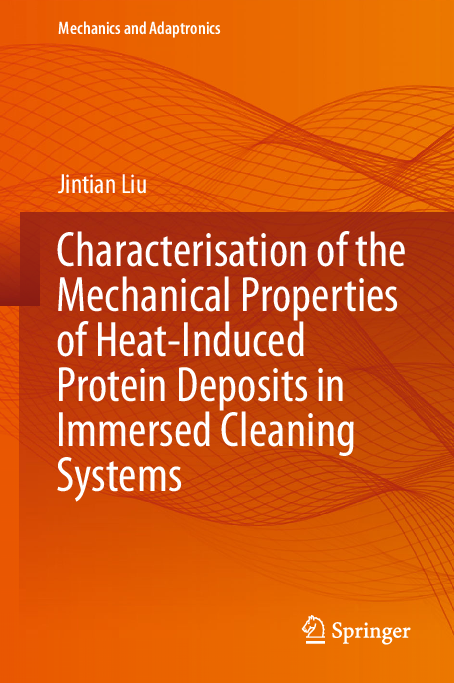During dairy production, the capability of storage and transport of raw milk at lower temperatures is insufficient to retard bacterial multiplication. For the improvement of hygienic conditions for further processing, heat treatment is widely used to destroy the microorganisms of raw milk and to mitigate the microbial growth to a large extent. During heat treatment, however, the rapid formation of heat-induced fouling deposits on the plant surface leads to reduced efficiency of heat transfer and consequently insufficient sterilisation. Therefore, regular cleaning process is required to remove the fouling deposits from the plant surface. In modern dairy production, the interior surface of pipes and vessels can be cleaned automatically through Cleaning-in-place (CIP) technology without dismantling the equipment. For the removal of milk fouling deposits generated during pasteurisation, the heat-induced protein network is softened by the cleaning detergent and washed away by turbulent flow piped through the production equipment.
In view of the downtime and the additional water and energy consumption, it requires a better understanding of the cleaning mechanisms and the corresponding influence factors, so that the cleaning process can be optimised adaptively in response to fouling deposits and piping systems.
Besides the thermal and chemical impacts, the mechanical property of fouling deposits is one of the key issues of cleaning process. On the one hand, the milk fouling deposit generated during pasteurisation is characterised as a soft and spongy structure. Its non-fractured behaviour dominates the deformation of fouling layer and the boundary condition of fluid flow. On the other hand, the failure behaviour of fouling deposit has great impacts on the cohesive removal of fouling deposits, involving softening effect of cleaning detergent as well as fracture behaviour responding to external loads. On account of these points, the present work is aiming to characterise the mechanical properties of fouling deposits.
The heat-induced fouling deposits have voluminous cone-shaped structure. Considering the complicated geometry and irregular distribution on the heating surface, indentation and indentation relaxation experiments were carried out on fouling deposits generated with raw milk and whey protein solution in micrometre scale by displacing the fouled heating surface through piezo-controlled manipulation. The experimental results reveal the significant influence of the thickness of fouling deposit on its mechanical behaviour. Furthermore, based on a three-dimensional material model, the material parameters of milk fouling deposits have been determined using the inverse finite element method, which can be used to predict the time-dependent mechanical behaviour under arbitrary external loads.
Furthermore, for the prediction of cohesive removal of deposit clusters, nonfractured and fracture behaviours were characterised using compression and wire cutting experiments, respectively. To achieve better reproducibility and experimental feasibility, heat-induced whey protein gel was used as the surrogate material for fouling deposits. With the material parameters determined from compression experiments, the critical value of the fracture criterion was identified based on the measured cutting force. This proposed approach allows the prediction of fracture behaviour of whey protein gel under localised external loads and provides a deeper insight into the cohesive removal during CIP. For the caustic washing during CIP and investigation of softening effect, the influence of chemical degradation of protein deposits on their mechanical behaviour was experimentally characterised. For this purpose, tensile experiments with different strain rates were conducted on chemically treated and untreated whey protein gels. The experimental results reveal that adequate chemical degradation leads to softer mechanical response and increased stress relaxation, making whey protein gels more flowable and more resistant to tension loads. The measured fracture strain can be used to predict the cohesive removal of protein deposit, while the stress-strain relations provide useful input data for modelling the failure behaviour of whey protein gel exposed to chemical degradation.
J. Liu
Characterisation of the Mechanical Properties of Heat-Induced Protein Deposits in Immersed Cleaning Systems
Springer, (2023) [Link]

